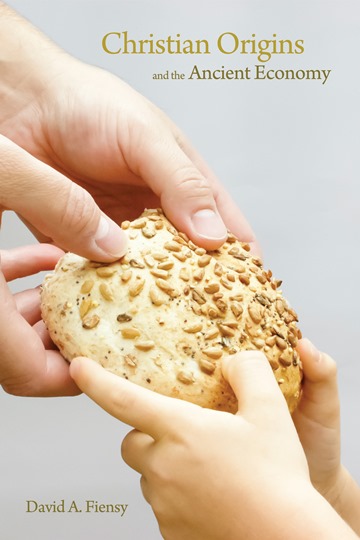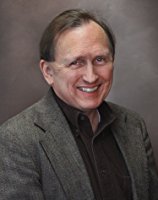David Fiensy: Christian Origins and the Ancient Economy
 David A. Fiensy, Christian Origins and the Ancient Economy (Cascade Books, 2014), 236 pages, ISBN 9781625641816.
David A. Fiensy, Christian Origins and the Ancient Economy (Cascade Books, 2014), 236 pages, ISBN 9781625641816.
Christian Origins and the Ancient Economy is a fascinating study of the socioeconomic environment during the “Second Temple Period” which included the time Jesus lived among us. Professor David Fiensy’s introduction, written in pure geek, gives a false impression of how fascinating and enjoyable his work becomes once readers reach chapter one. Chapter 9, “Poverty and Wealth in the Jerusalem Church,” is worth the price of the book. Written in readable, Reader’s Digest English, it is an exposition on Acts 4:32-34, the quintessential vision of God for His church.
Fiensy begins by introducing the various social strata in Galilee. Jesus, to begin with, was a carpenter, an artisan, in low social standing among both Greeks and Romans, but extolled by the rabbis. Jesus hobnobbed with the elites, however, who were socially above Him: Johanna and her husband Chuza (an official of Herod Antipas), Jarius, Zacchaeus, Nicodemus, and Joseph of Arimathea to name a few. Perhaps, some of the elites employed Him, as a carpenter. Fiensy argues that it was Jesus, the artisan, that lead a mass movement of peasants—though the professor can only surmise how this, historically speaking, came about. As an artisan, he would have interpreted life differently than the average peasant. Additionally, Jesus, would have practiced his craft in an urban setting. This would place Jesus, culturally, worlds removed from that of a farmer. Rural populations maintained their native languages and customs. Urbanites spoke Greek and were “in touch …with the great institutions and ideas of Greco-Roman society.”
Fiensy then asks, “Was debt widespread in Jesus’s time?” That is to ask: was at least 30% of peasantry facing foreclosure on their farmlands and homes? A peasant was a subsistence farmer who was trying to grow enough to feed his family. Peasant farmers made up the greater part of a Galilean subsistence economy. They worked between 1 and 15 acres of land to feed their families on 13 to 25 bushels of wheat—per 6 acres sowed each year. The book is full of such fun facts that bring the parables of Jesus to life and provide needed insight into the New Testament narrative.

David A. Fiensy
Through the book, Professor Fiensy debates the use of a socio-economic model and its archeological accuracy in explaining a Galilean economy. Professor Fiensy uses tables, scriptures, social models, archeological finds as well as other historical data to argue both sides of this intriguing question about private debt. For example, Josephus tells a relevant story of a mob of desperate peasants setting fire to the archives in Judea to burn the record of their debts. Was this the economic backdrop to Jesus’s ministry? There are many unanswered socio-economic questions debated by archeologists and sociologists. Prof. Fiensy welcomes us into this forum as he discusses such subjects as economic crises, the introduction of currency, property, and taxes.
The economy of Lower Galilee, Fiensy’s first concern, was in the early stages of changing from a subsistence economy that bonded peasants together in a common struggle for survival into a market economy (i.e. cash crops to increase wealth) where everything had a price and coinage was, more and more, the medium of exchange. (Fiensy uses the term: commercialized.) Consequently, old associations, family, neighbors, and religious life, were becoming of lesser value. It was in this context Jesus spoke out against riches in Mark 10:25.
Category: Biblical Studies, Winter 2017


